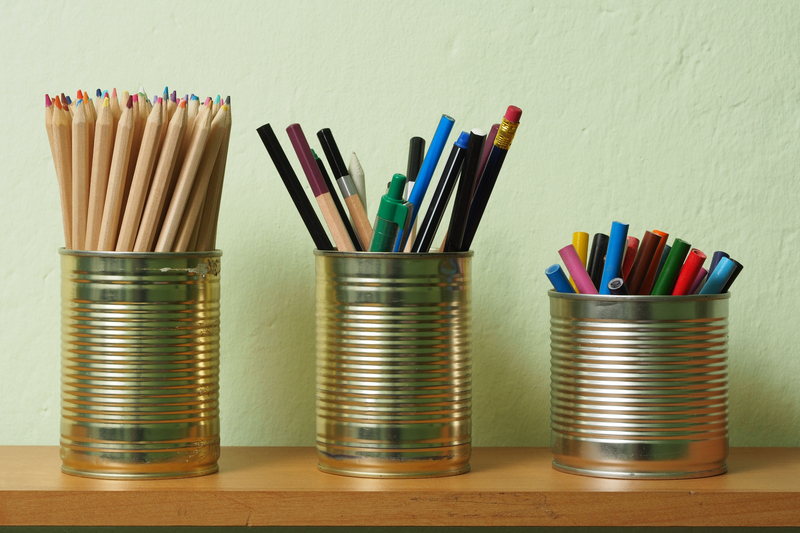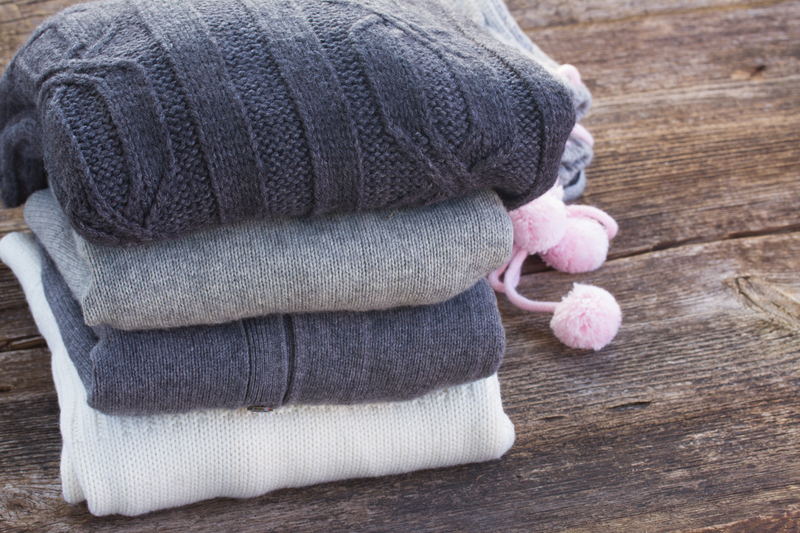Recycling Old Kitchenware: What You Need to Know
Recycling is more than just sorting your cardboard and plastics each week -- it's about rethinking what we do with all the items in our homes, including the kitchen essentials that have seen better days. Have you ever wondered how to recycle old kitchenware? Or if your chipped plate, rusty pan, or worn-out utensils belong in the recycling bin or trash? This comprehensive guide delves deep into recycling old kitchenware, offering actionable tips for responsibly disposing of items and giving new life to classic kitchen staples.
Why Recycling Kitchenware Matters
The kitchen is the heart of the home, but it also generates a significant amount of waste. Old kitchen utensils, pots, pans, glassware, and ceramics eventually wear out or become outdated. Tossing them in the regular trash contributes to landfill overflow and environmental damage.
- Resource Conservation: Recycling saves raw materials, energy, and water.
- Reduces Landfill Waste: Kitchenware, especially metals and ceramics, takes decades to decompose.
- Prevents Pollution: Reusing and recycling reduces the need for mining, manufacturing, and transportation.
Understanding the facts behind kitchenware recycling can help you make informed choices for a greener kitchen and planet.

Types of Kitchenware: What Can Be Recycled?
Not all kitchen items are made equal when it comes to recycling. Here's a breakdown by material:
1. Metal Cookware (Pots, Pans, Baking Trays)
- Aluminum & stainless steel: These are highly recyclable. Remove non-metal parts like plastic handles if possible.
- Non-stick cookware: Teflon coating is problematic, so only recycle in facilities that accept coated metals.
- Copper: Valued at metal recycling centers. Clean thoroughly before recycling.
2. Ceramics and Porcelain
- Plates, mugs, bowls: Not widely accepted in curbside programs. Look for specialized recycling or repurpose them creatively.
- Cracked or chipped ceramics: Usually destined for landfill unless upcycled.
3. Glassware
- Non-tempered glass: Wine glasses, bowls, and dishes aren't the same as containers and are often excluded from recycling bins.
- Broken glass: Never put in standard recycling due to safety hazards.
4. Plastic Utensils and Containers
- Marked recyclables (usually #1 or #2): Can often go in your blue bin.
- Plastic with no recycling symbol: Toss in trash or upcycle into craft projects.
5. Wooden Kitchenware
- Spoons and cutting boards: Biodegradable, but not suited for most recycling programs.
- Best option: Compost if untreated or repurpose decoratively.
6. Small Appliance Parts
- Blenders, mixers, toasters: Remove electronic parts and recycle metals and plastics at e-waste centers.
How to Prepare Kitchenware for Recycling
Before you place items for recycling, follow these vital steps:
- Clean thoroughly: Remove food residues, oils, or coatings as much as possible.
- Disassemble where possible: Separate metal, plastic, and electronic parts.
- Check local rules: Not all facilities accept every item. Visit your municipality's website for recycling guidelines.
Where to Recycle Your Kitchenware
Different recycling options exist depending on the type and condition of your kitchen items:
1. Curbside Recycling Programs
- Only available for some plastics and metals.
- Check if your area picks up cookware or only specific household recyclables.
2. Scrap Metal Dealers
- The best way to recycle metal pots, pans, and even broken metal utensils.
- You might even receive payment for heavier items like cast iron or copper.
3. Recycling Drop-Off Centers
- Usually accept a wider variety of materials than curbside recycling.
- Look for facilities that handle glass, ceramics, or electronic waste.
4. Manufacturer Take-Back Programs
- Some brands have initiatives to collect non-stick pans or appliance parts for proper disposal or recycling.
5. Upcycling and Repurposing
- Get creative by turning old cookware into planters, utensil holders, or garden art.
Always verify with your local facility about what's accepted and how they want items sorted. Some materials, like ceramics or tempered glass, are considered contaminants in regular recycling streams.
Donating and Selling Usable Kitchenware
Recycling is crucial, but the greener alternative is reuse:
- Donate: Many charities, shelters, and thrift stores will accept gently used pots, pans, and tableware.
- Sell: Try online marketplaces for unique or vintage kitchenware. Someone may be searching for that retro dish set or cast-iron skillet!
- Gift: Offer to neighbors, friends, or college students setting up their first home.
Donating extends the life of kitchenware and helps those in need, reinforcing the mantra of reduce, reuse, recycle.
Creative Upcycling Ideas for Old Kitchenware
Before throwing your old kitchen goods away, consider upcycling them. Here are some innovative ideas:
- Pots and pans: Turn into planters for herbs or flowers.
- Cutlery: Bend forks and spoons into wall hooks or unique jewelry.
- Teacups: Repurpose as candle holders or succulent planters.
- Colanders: Make a quirky hanging light fixture.
- Wooden cutting boards: Use as serving trays or paint as kitchen decor.
With a little creativity, old kitchenware can find new life outside the landfill.
The Do's and Don'ts of Recycling Old Kitchenware
Do:
- Check with your local waste services for accepted materials.
- Thoroughly clean and disassemble items before recycling.
- Separate different materials (metal, plastic, glass) by type.
- Consider donation or resale for usable items before recycling.
Don't:
- Put ceramics or broken glass in standard recycling bins.
- Recycle dirty or greasy kitchen items -- these contaminate recycling streams.
- Mix electronics with regular recyclables. Take to an e-waste center.
- Assume all plastics are accepted -- check for the recycling code.
Frequently Asked Questions about Recycling Kitchenware
Can I recycle Teflon-coated pans?
Most municipalities do not accept non-stick cookware in curbside bins due to chemical coatings. Scrap metal yards or manufacturer take-back schemes are a better choice.
What about broken dishes and glassware?
Sadly, most broken ceramics and glassware are not recyclable. Wrap carefully and dispose of in the trash unless special facilities are available. Try upcycling as garden markers or mosaics!
How do I dispose of small appliances?
Remove the cord and battery, then take to an electronics recycling center. Metal parts may be salvageable at a scrap yard.
Can I compost any kitchenware?
Untreated wooden spoons and boards can sometimes go in the compost heap. Otherwise, stick with recycling or upcycling.
Is recycling kitchenware worth the effort?
Absolutely! Every sustainably disposed item saves resources and reduces landfill burden. Plus, creative reuse can give your kitchen a sustainable story and save you money.

Tips for Reducing Kitchenware Waste
- Invest in quality: Choose durable kitchenware to reduce the frequency of disposal.
- Buy secondhand: Thrift stores and online marketplaces offer bargains and reduce demand for new products.
- Avoid single-use plastics and disposables.
- Repair instead of replace: Fix loose handles or refinish scratched wood to extend usability.
- Share with your community: Host kitchenware swaps with neighbors.
Conclusion: Making Kitchenware Recycling Second Nature
Recycling old kitchenware isn't always straightforward, but it's essential for a healthy planet. By understanding what materials can be recycled, where to take them, and how to upcycle or donate still-useful items, you're making a real environmental difference. Every small action counts -- and in the heart of your home, these actions add up to greener, more sustainable living.
Keep this guide bookmarked the next time you're clearing out your cupboards, and inspire others to join the movement for responsible kitchenware recycling.
Remember: Recycling old kitchenware is not just about disposing, but about making mindful choices for our kitchens and our world. Start today -- your kitchen (and the planet) will thank you!